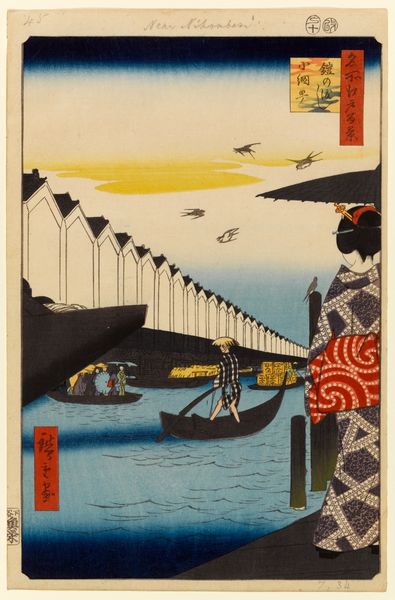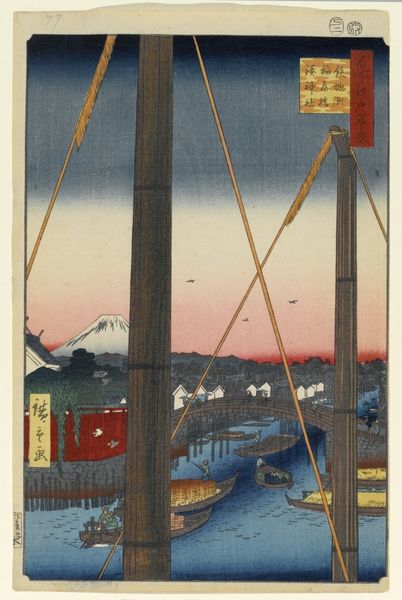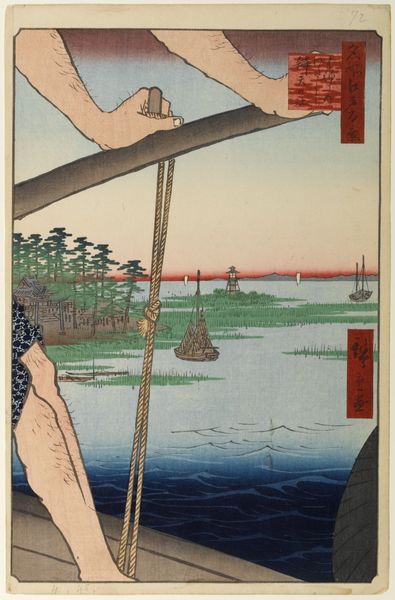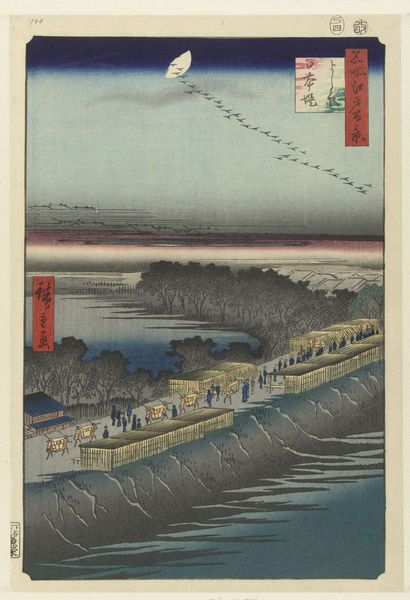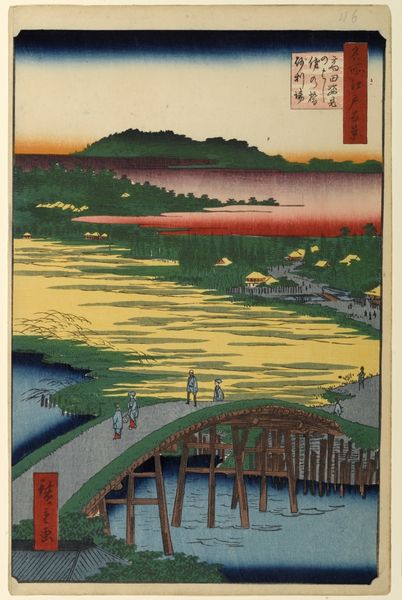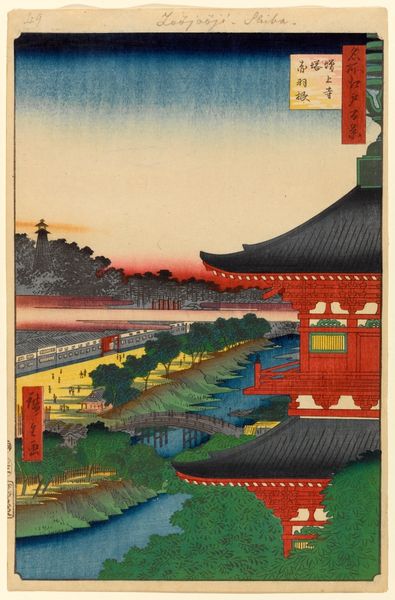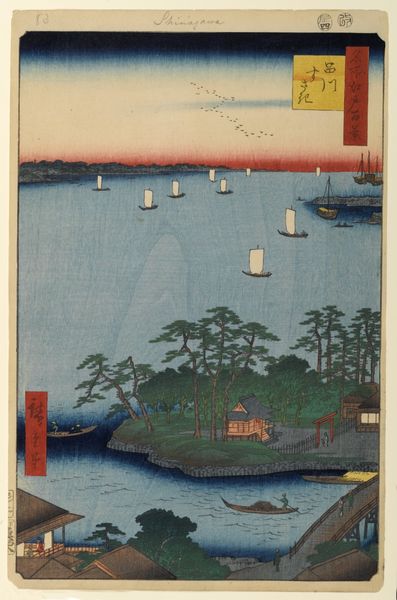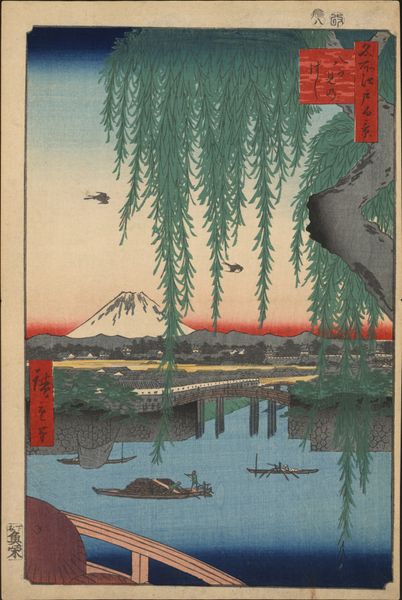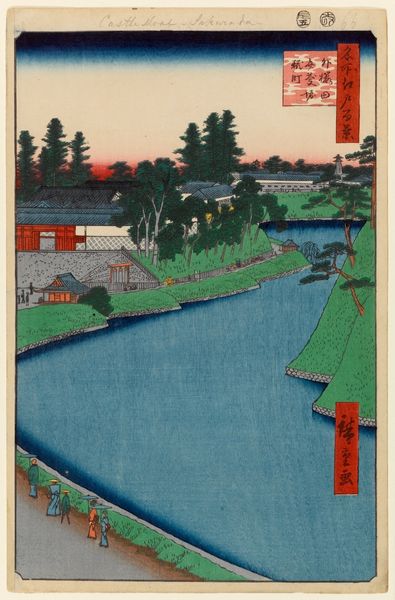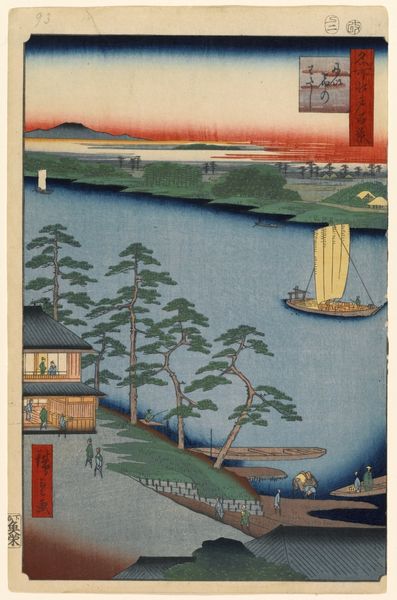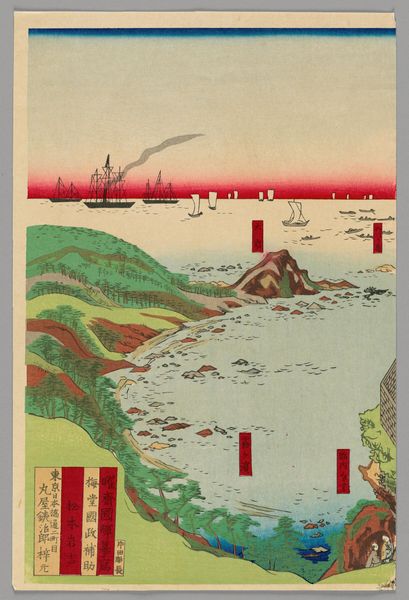
Nihonbashi Bridge and Edobashi Bridge Possibly 1857
0:00
0:00
coloured-pencil, print, ink, woodblock-print
#
coloured-pencil
#
water colours
# print
#
landscape
#
ukiyo-e
#
ink
#
coloured pencil
#
woodblock-print
#
orientalism
#
cityscape
Dimensions: 13 5/16 x 8 11/16 in. (33.8 x 22 cm) (image)14 3/4 × 9 5/8 in. (37.5 × 24.5 cm) (sheet, vertical ōban)
Copyright: Public Domain
Editor: So, this woodblock print, *Nihonbashi Bridge and Edobashi Bridge,* possibly from 1857, by Utagawa Hiroshige… I find it sort of disorienting at first. The close-up view through the bridge supports feels unconventional. What do you see in this piece? Curator: What strikes me immediately is how Hiroshige reframes familiar urban scenes through carefully constructed viewpoints. The bridges, rather than being presented as majestic structures, are seen from an oblique angle, filtered through the everyday infrastructure that supports them. How does that inform your understanding of urban space during the Edo period? Editor: I guess I hadn't thought about that. It’s like he's deliberately avoiding a picturesque, idealized view. Instead, we’re getting something grittier, more immediate, about urban life as it was *experienced*. It makes you wonder what social strata of the time could or could not have access to such points of view. Curator: Exactly. Ukiyo-e prints like these were initially targeted towards commoners, offering glimpses into fashionable districts and bustling city life. Consider how the rigid social hierarchies influenced artistic representation and, inversely, how these prints shaped the public's perception of their cities and social order. It's about democratizing views of celebrated locations. Editor: So it’s less about idealized beauty, and more about experiencing Tokyo—or Edo as it was known—as an accessible, bustling space for many levels of society? That makes the choice of this kind of ‘imperfect’ point of view so much more deliberate and meaningful. Curator: Precisely. And think about how this accessibility potentially changed social dynamics within Edo society as it was portrayed to, and consumed by, people from varying walks of life. Editor: I’m now looking at the print with totally new eyes. Thanks to your insights, I appreciate the layers of historical context and the visual rhetoric. Curator: And for me, your enthusiasm is a great reminder of how relevant these pieces remain to understanding urban experience and social perspective even today.
Comments
No comments
Be the first to comment and join the conversation on the ultimate creative platform.

